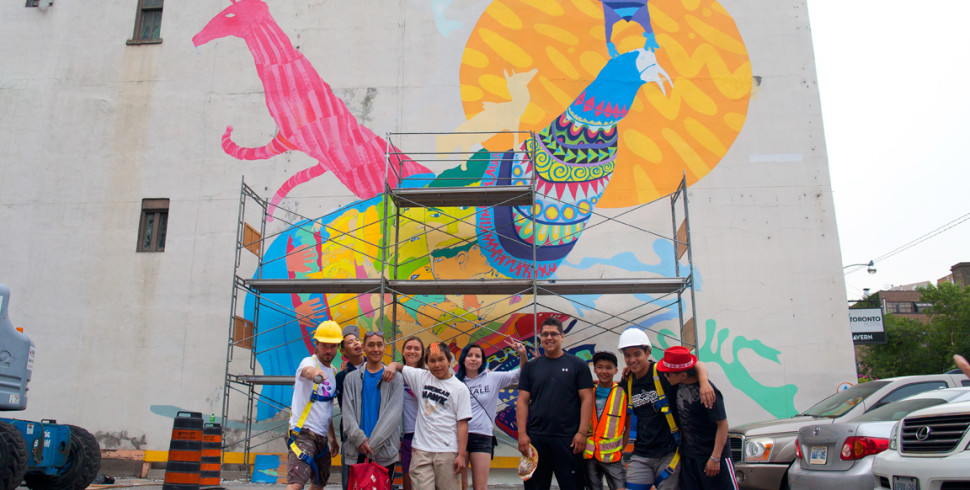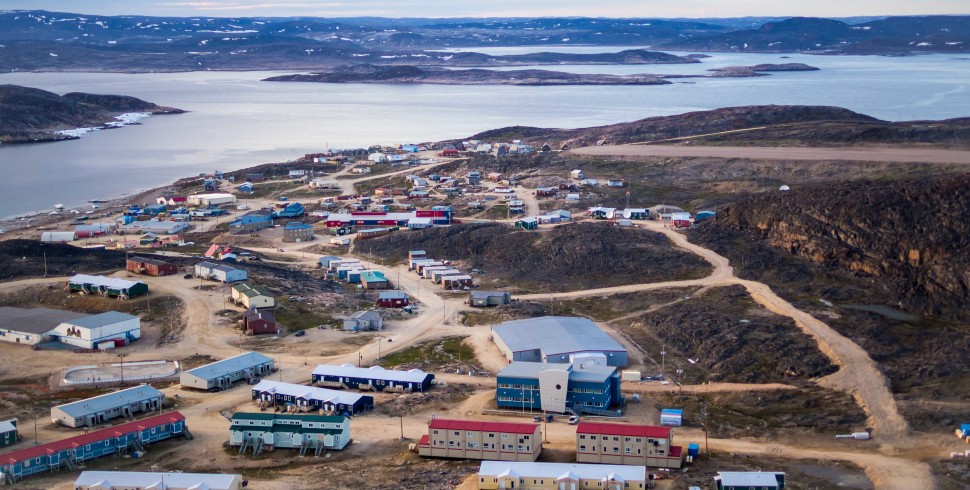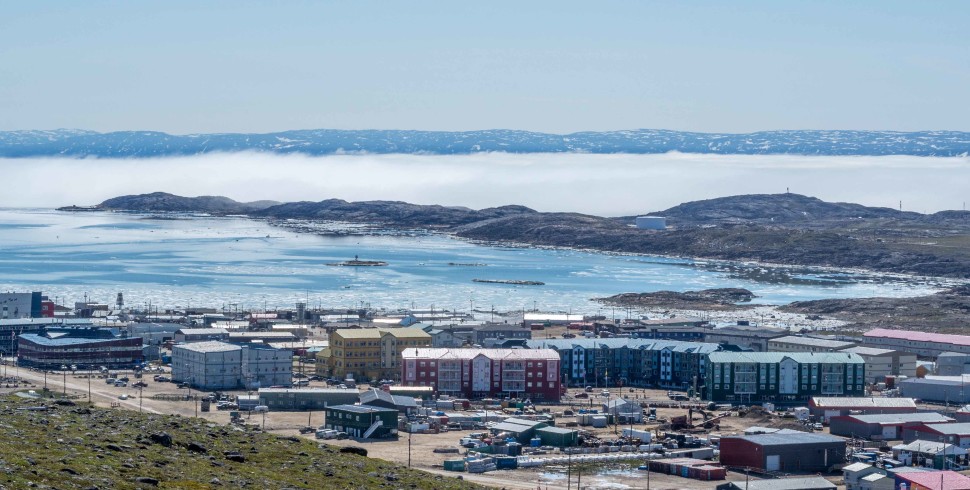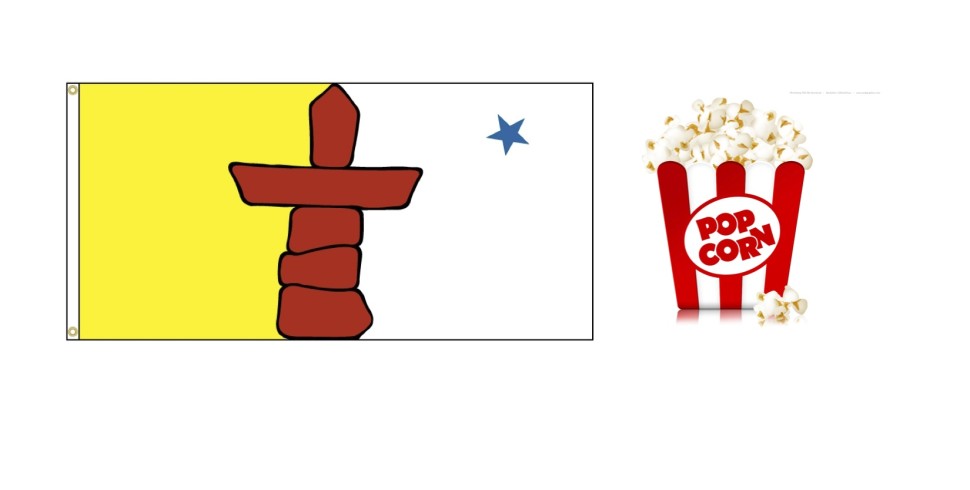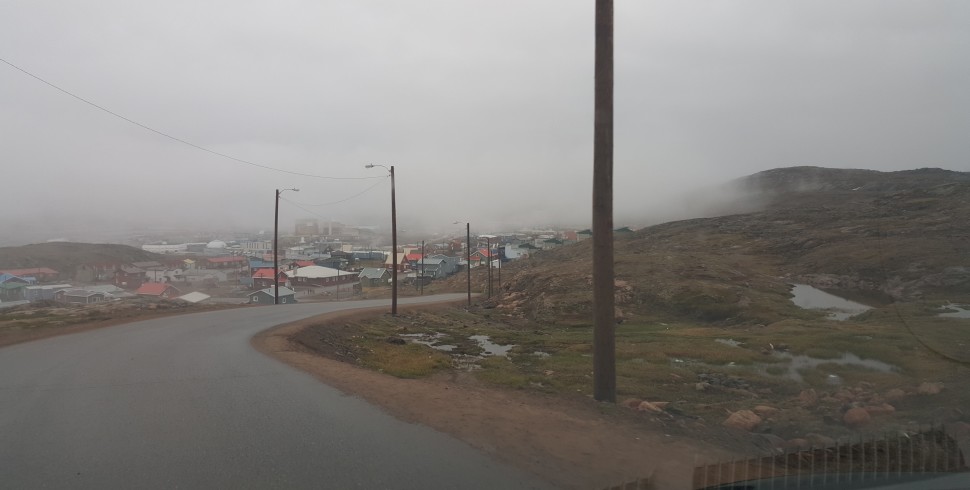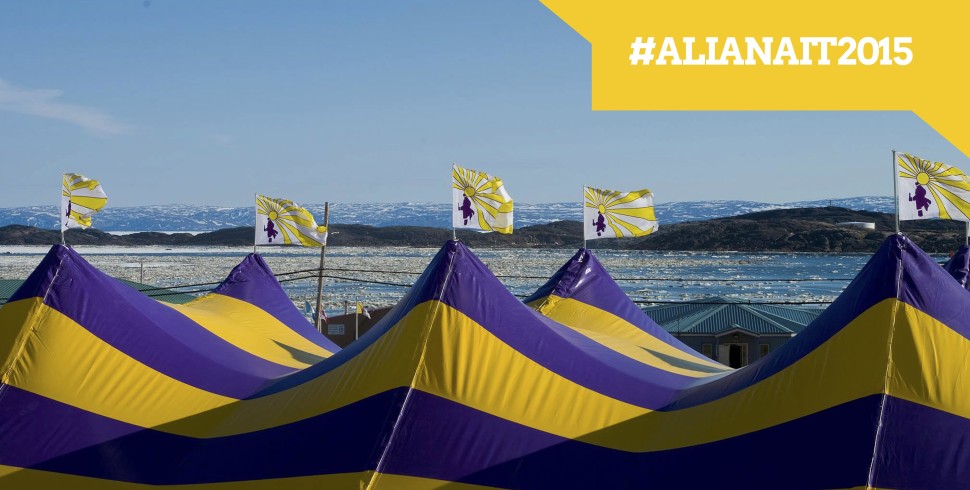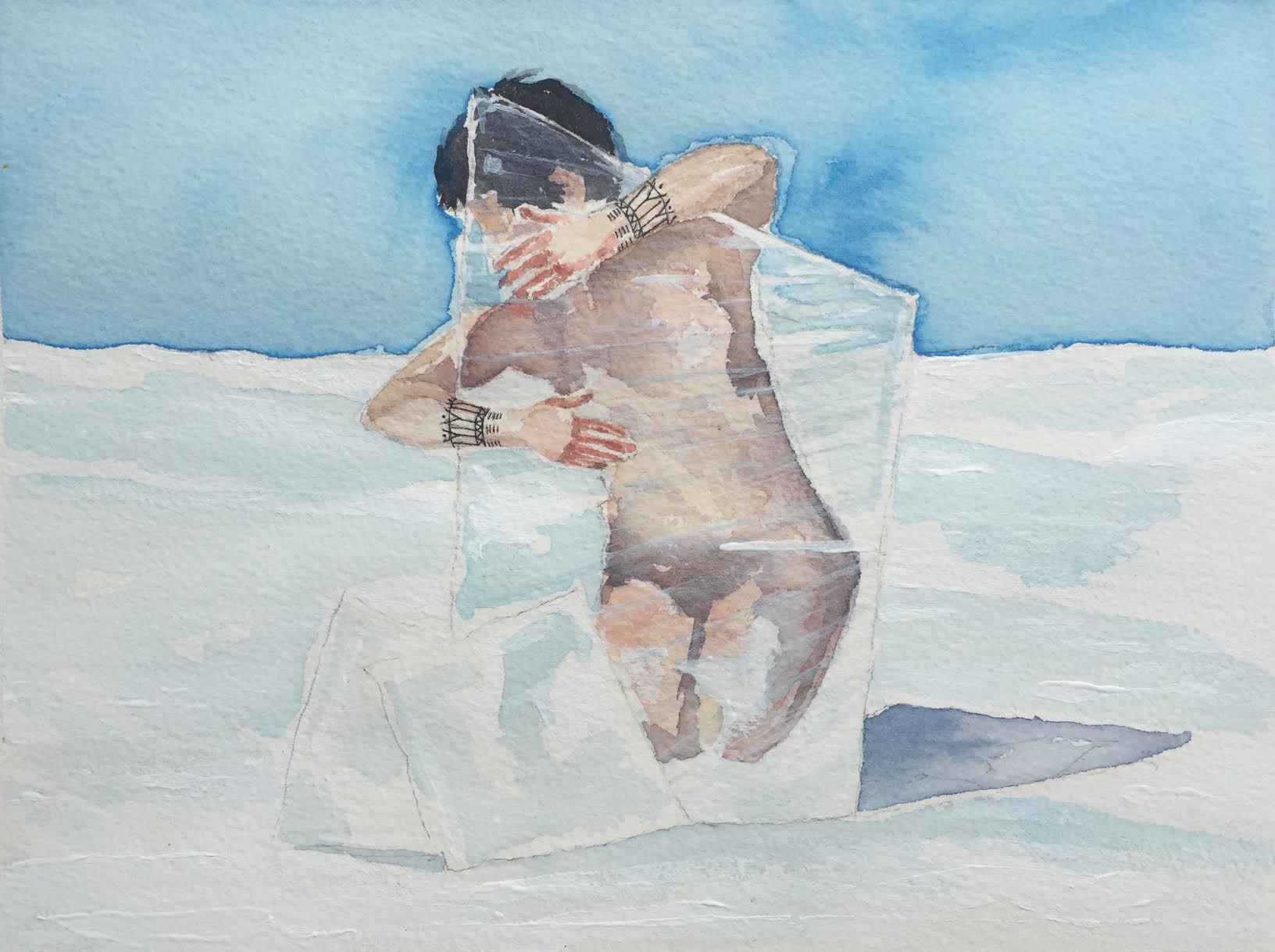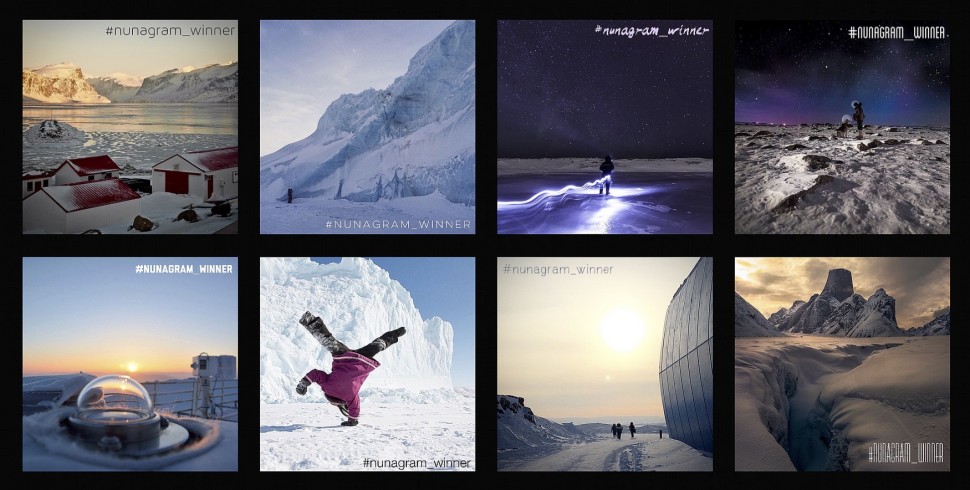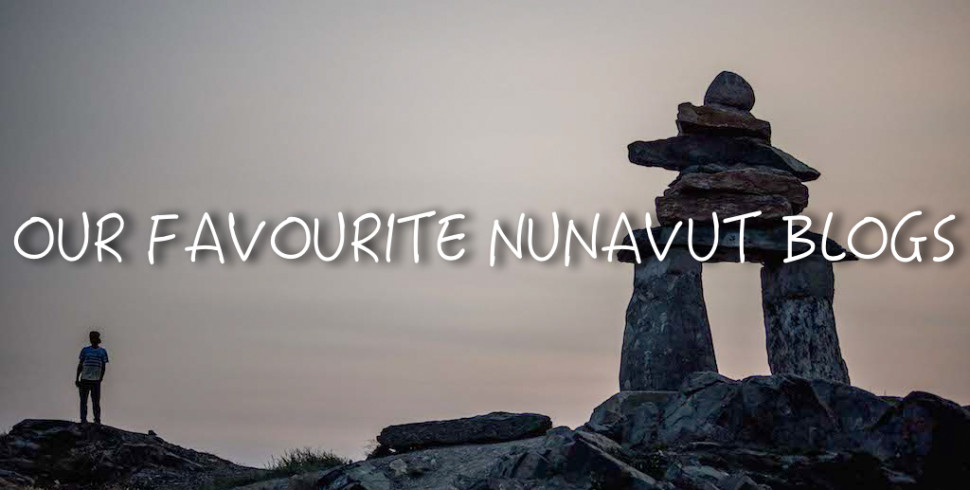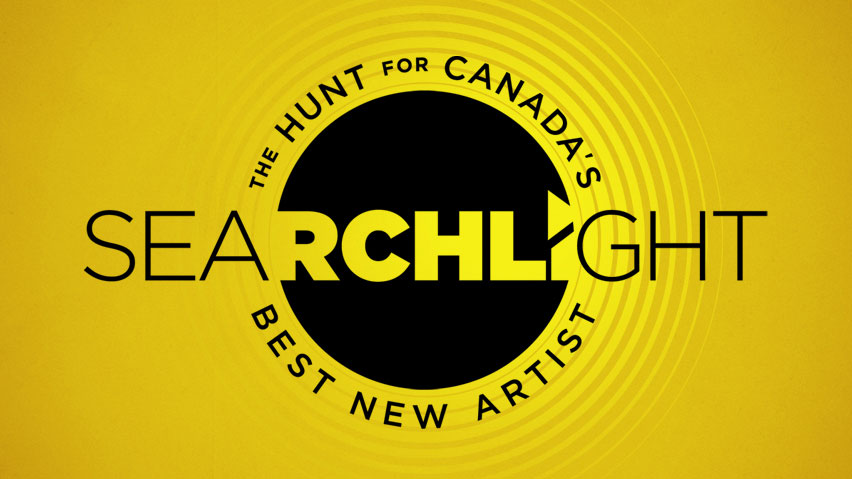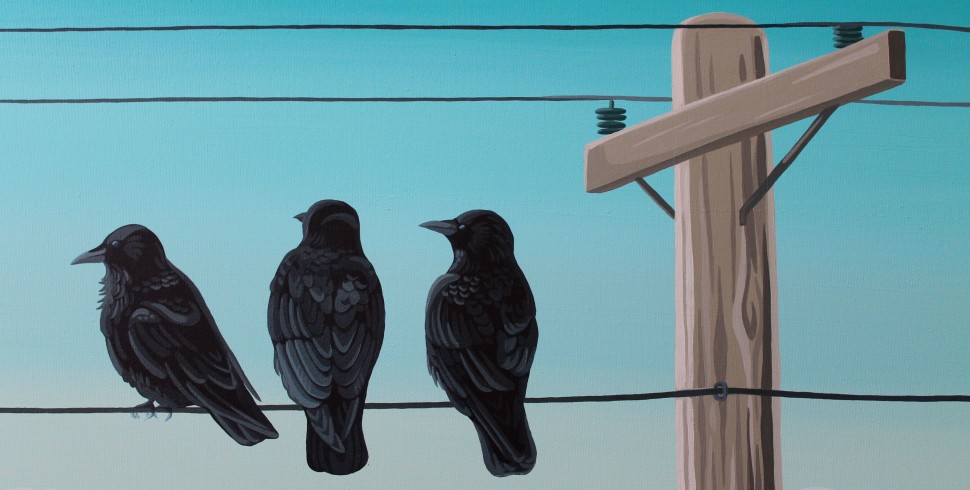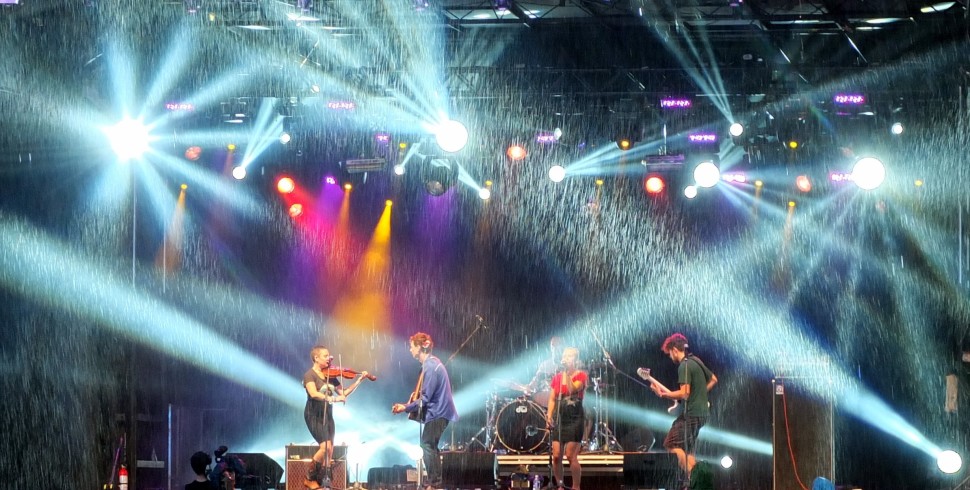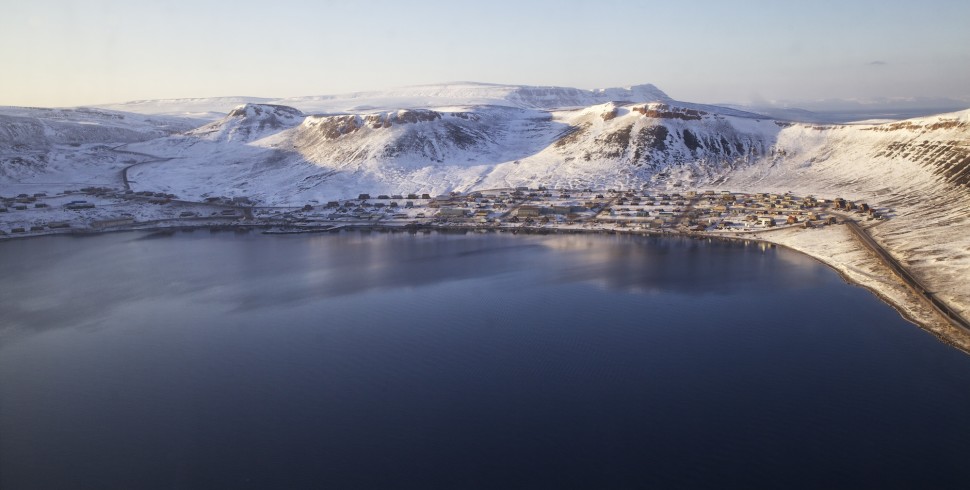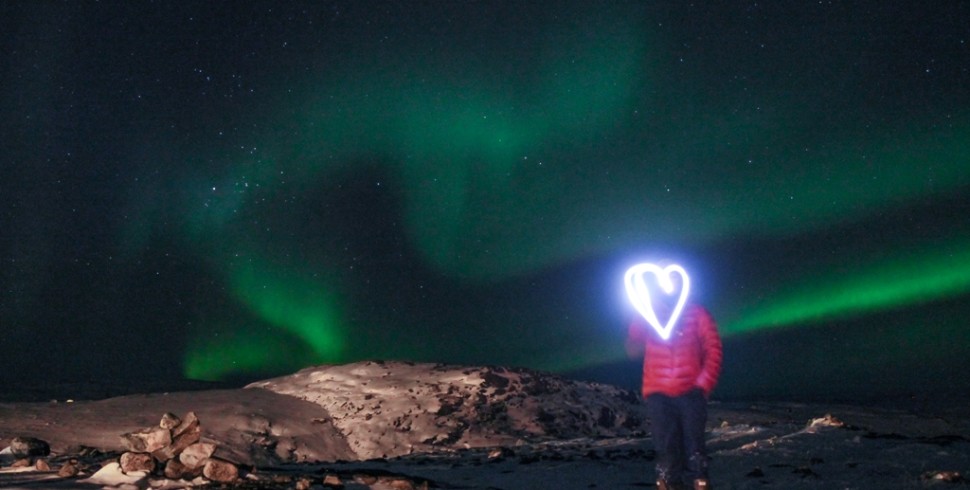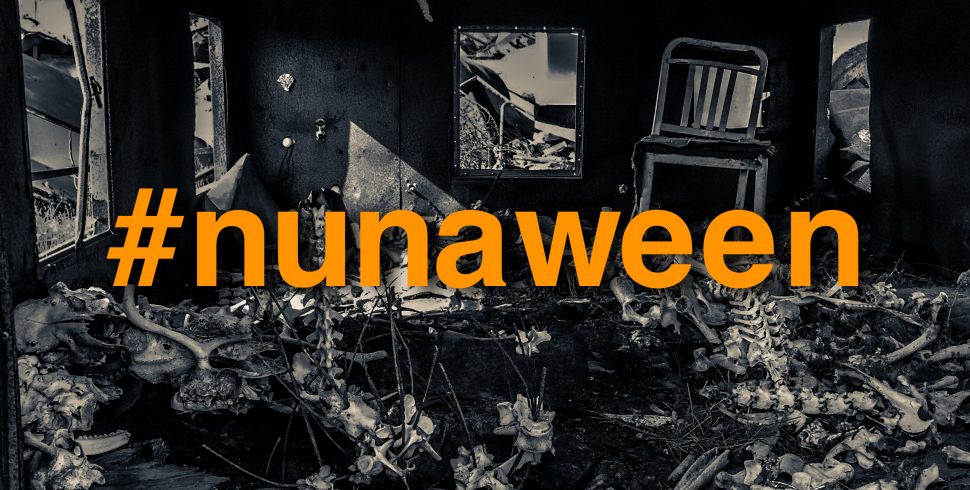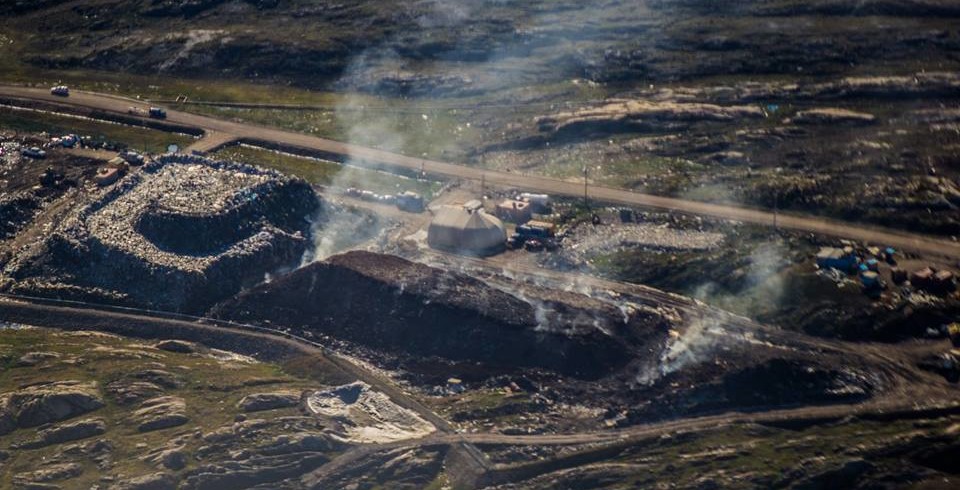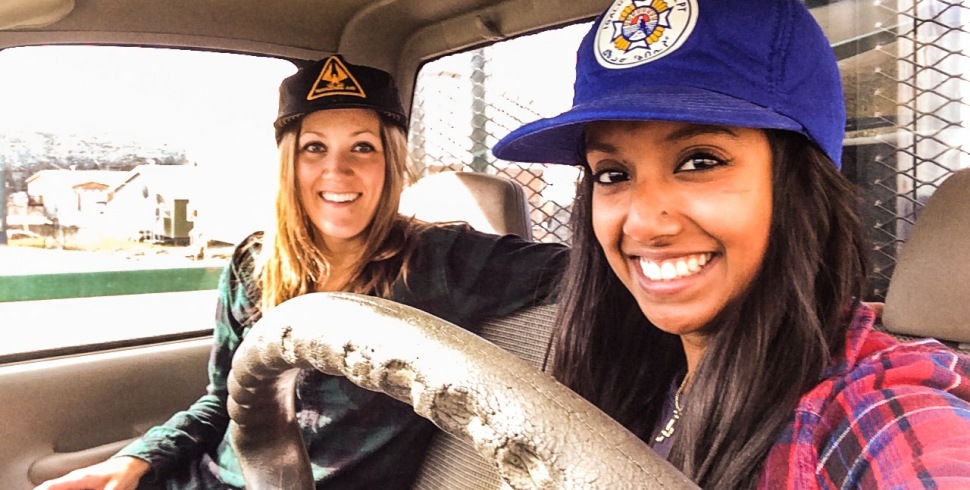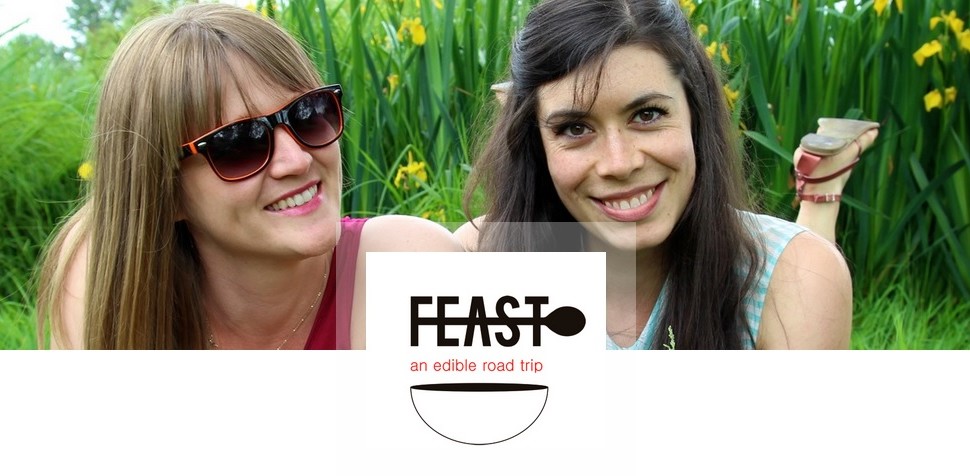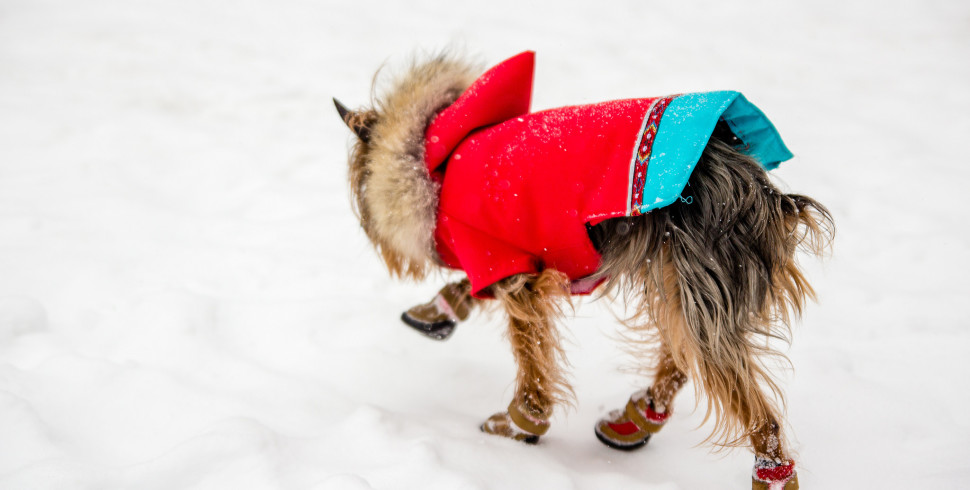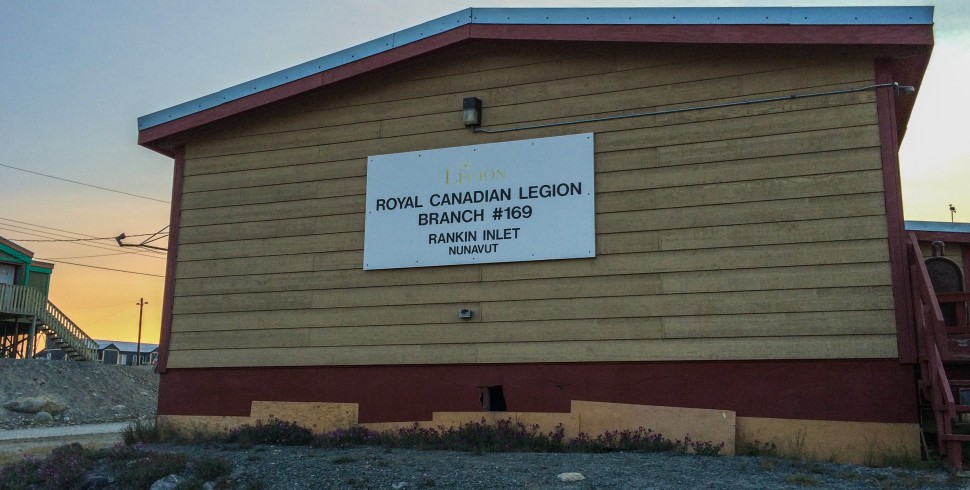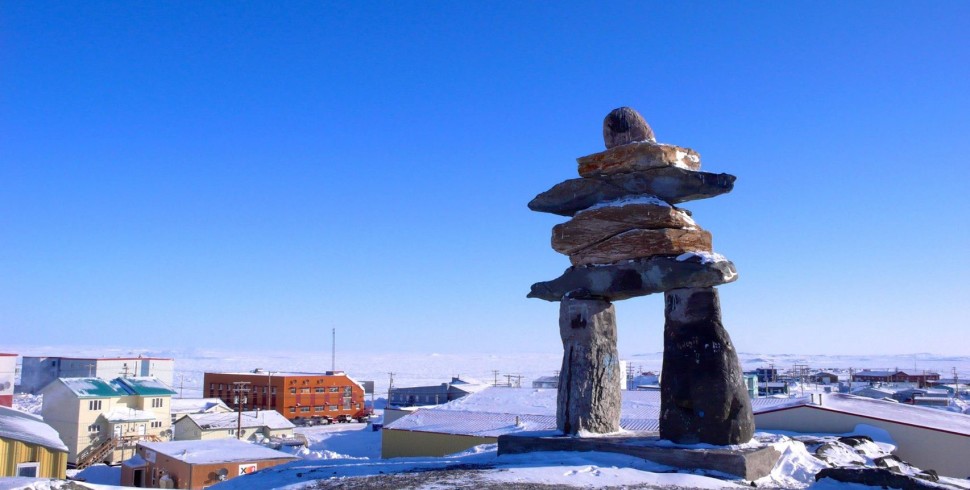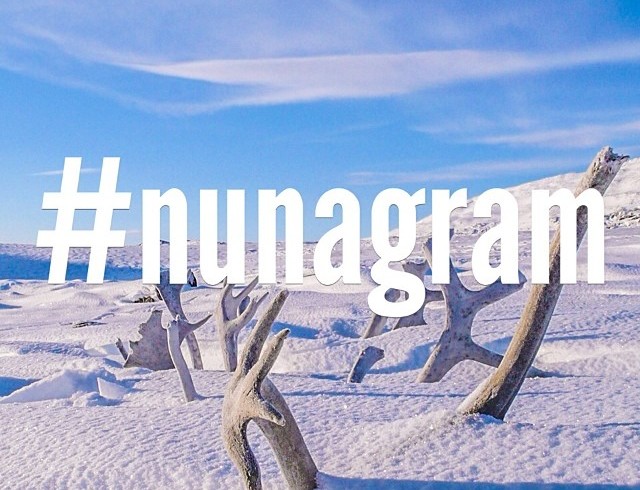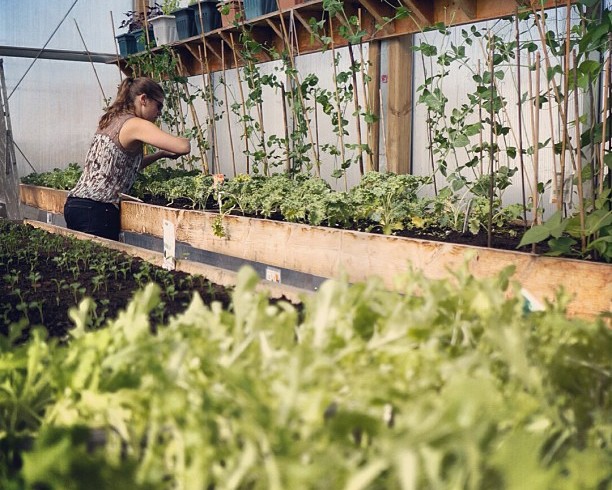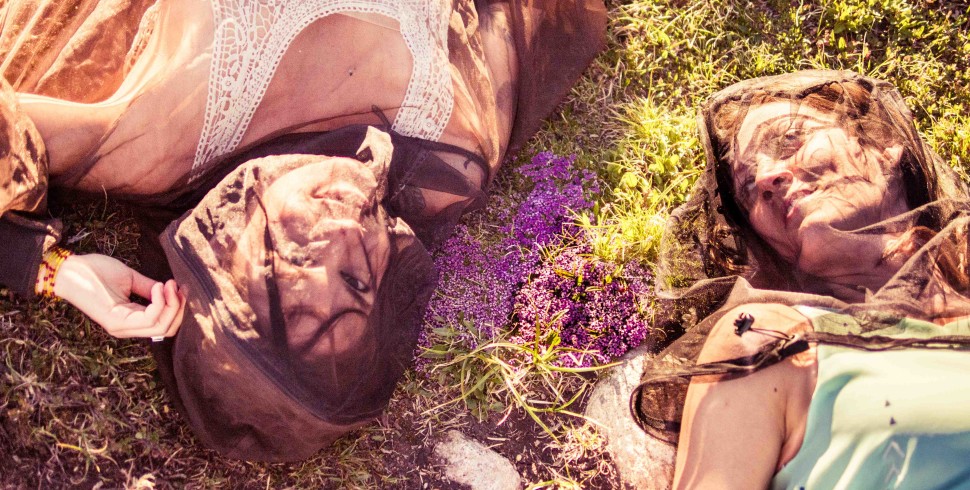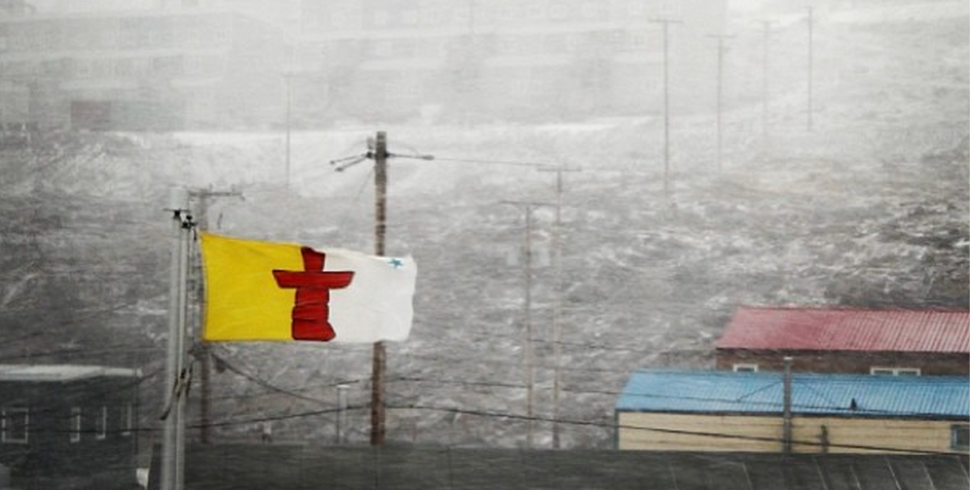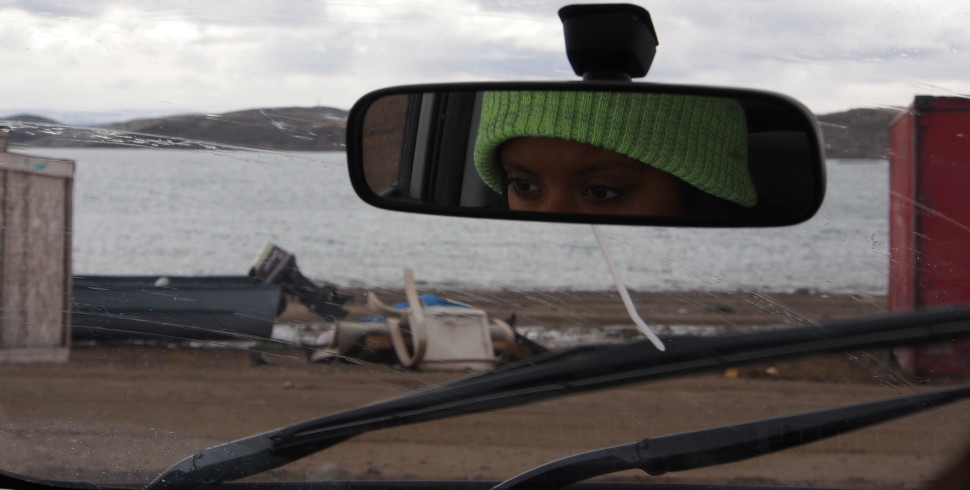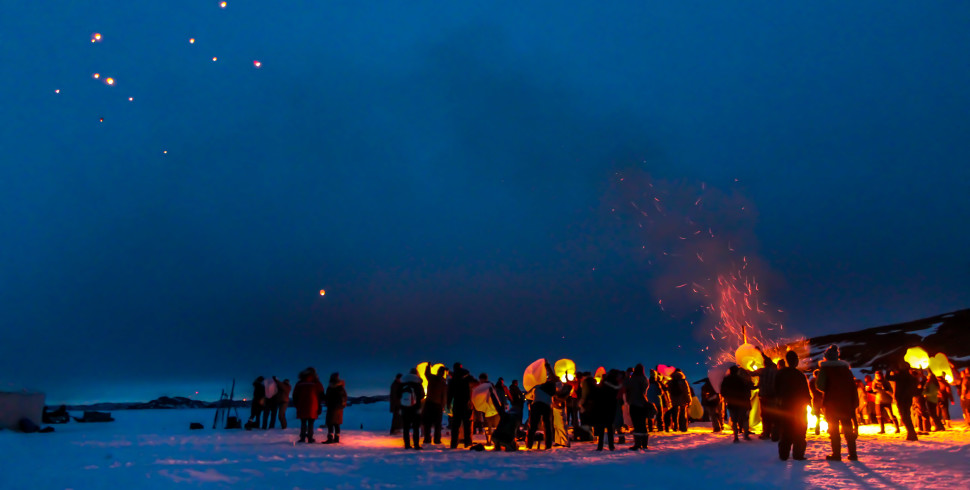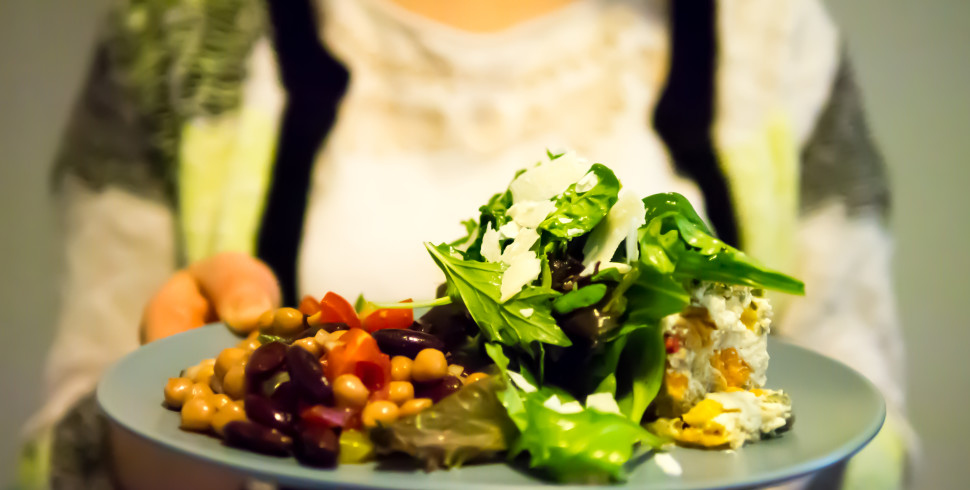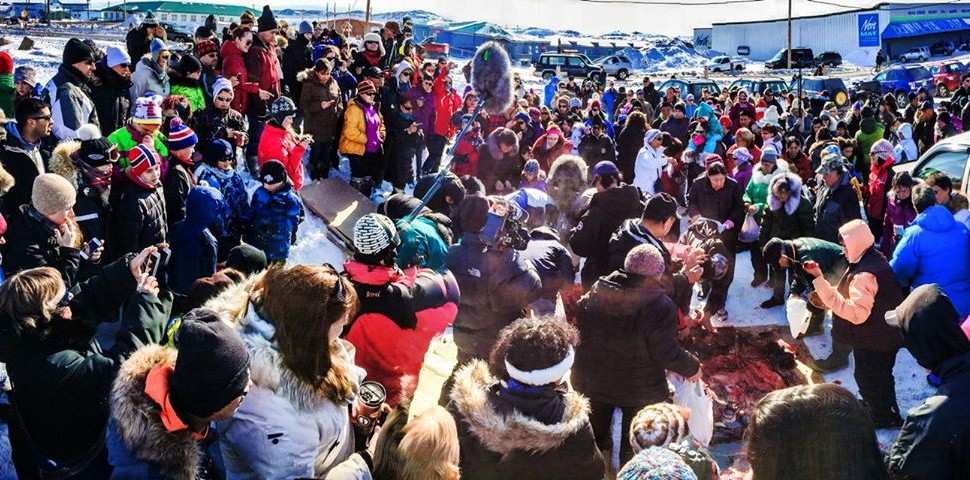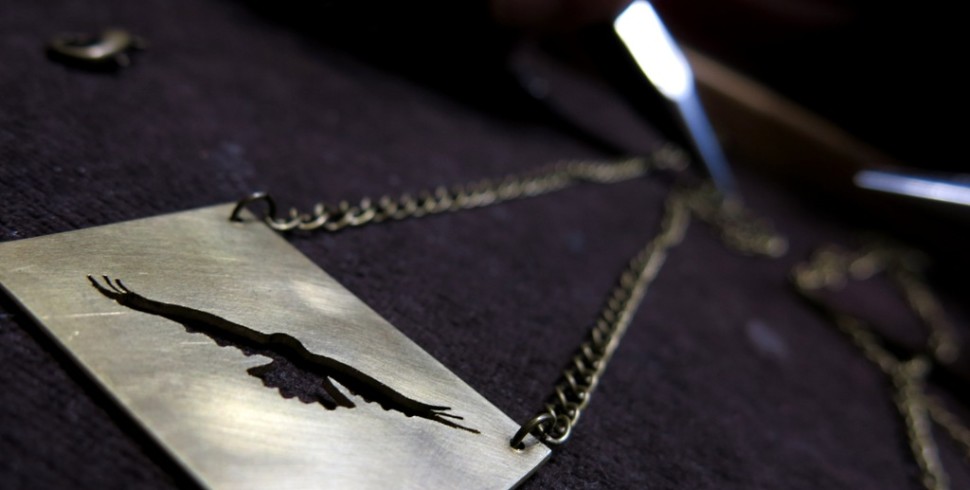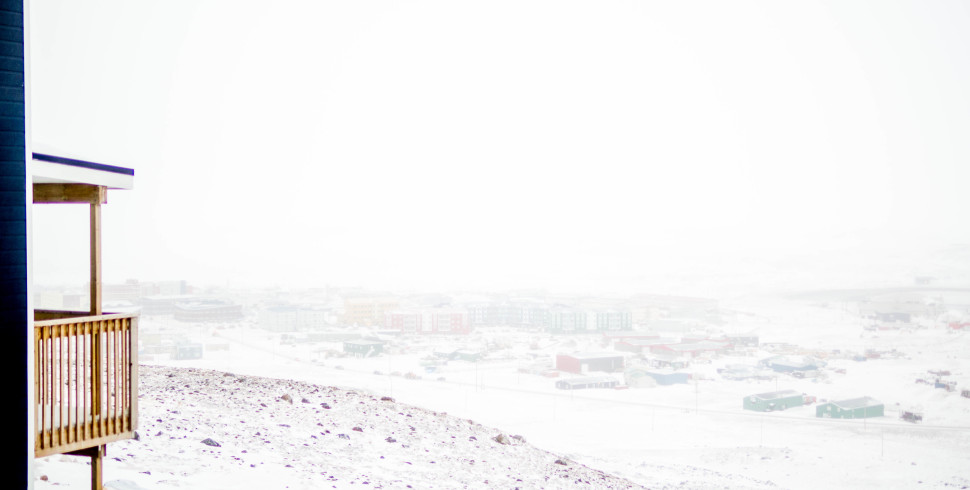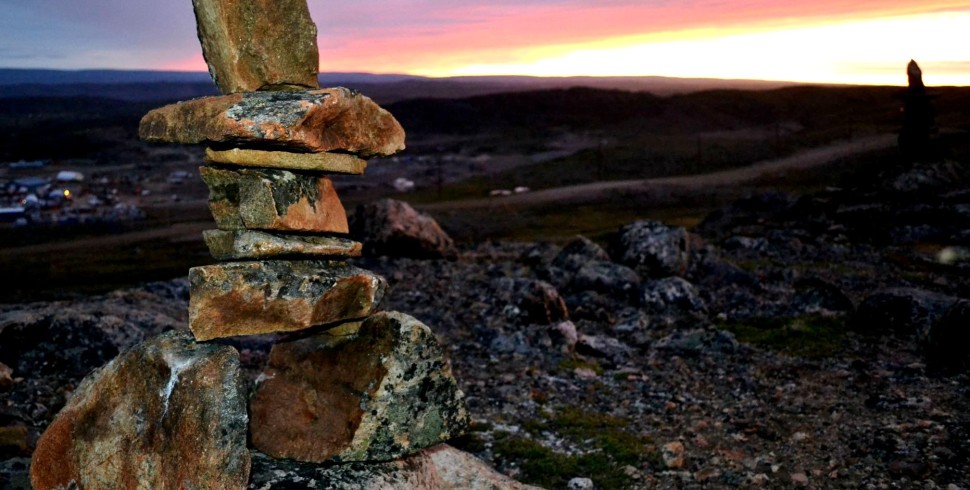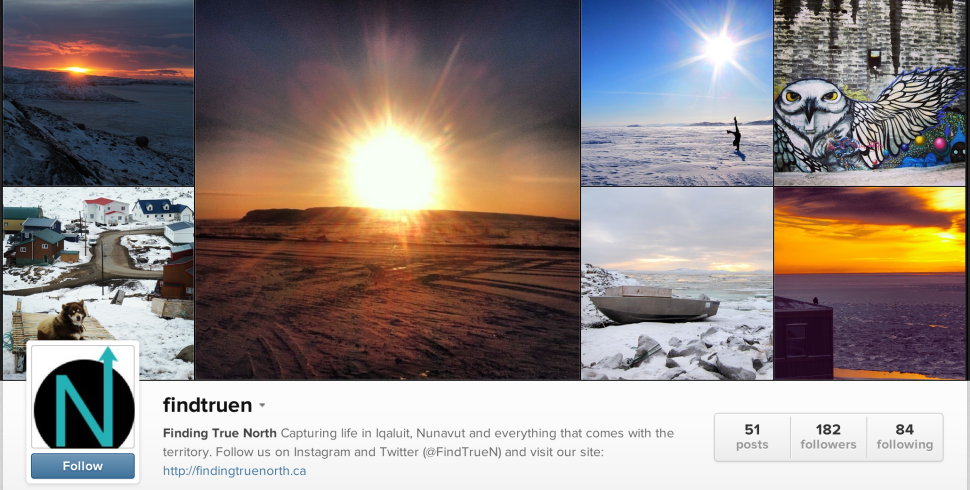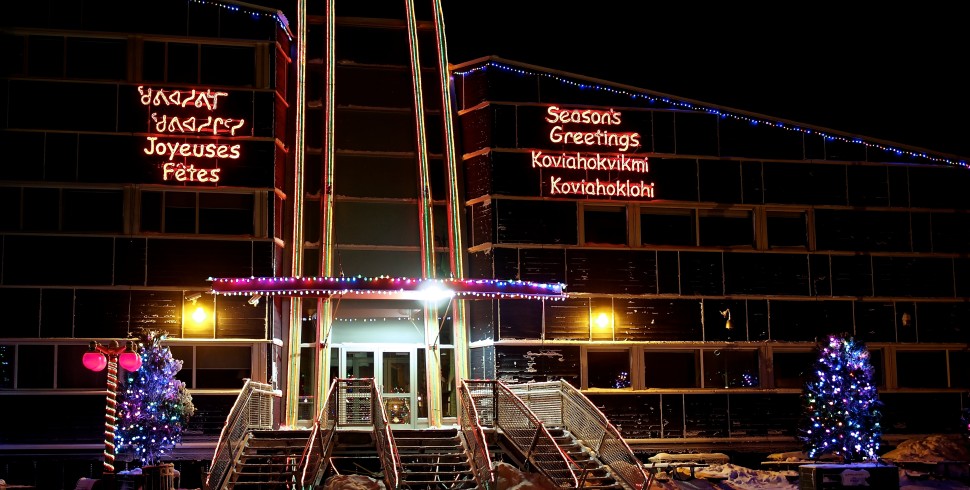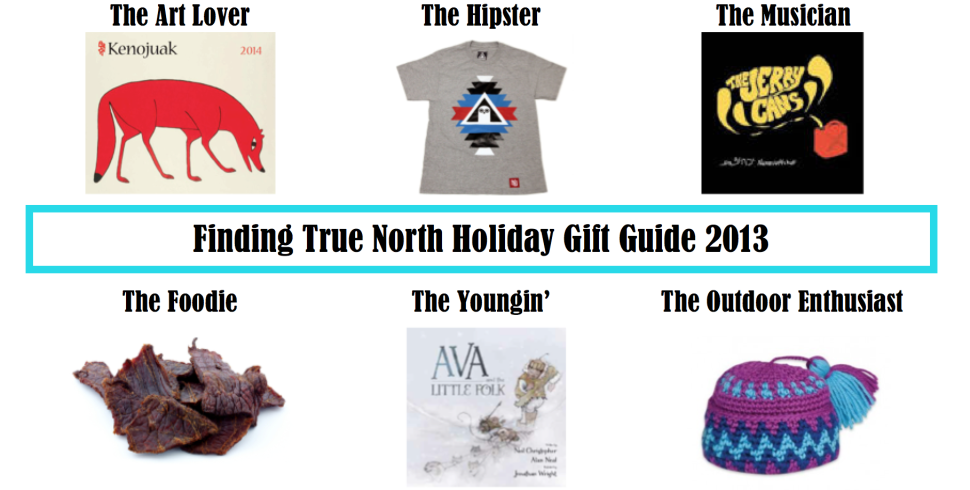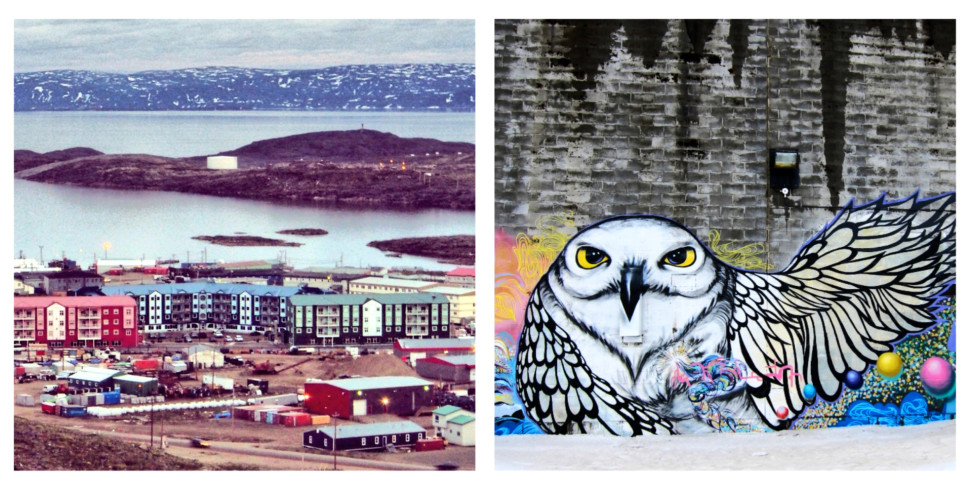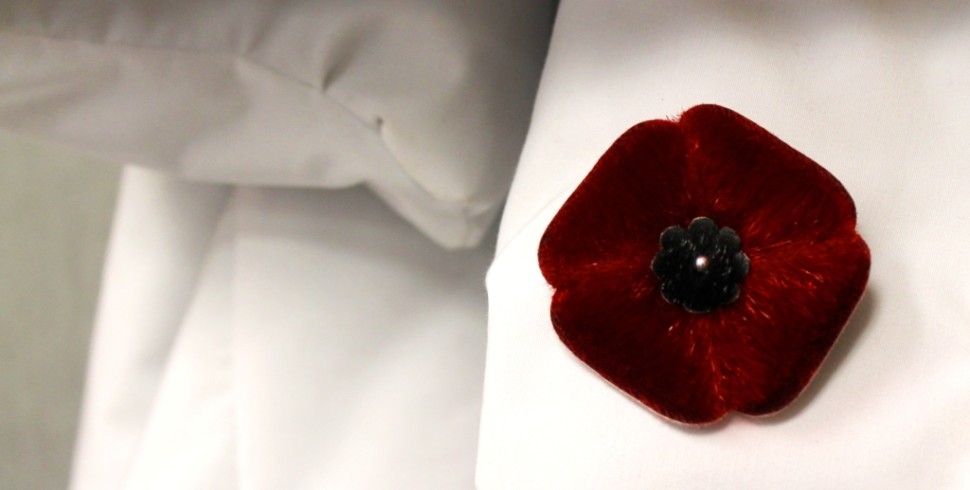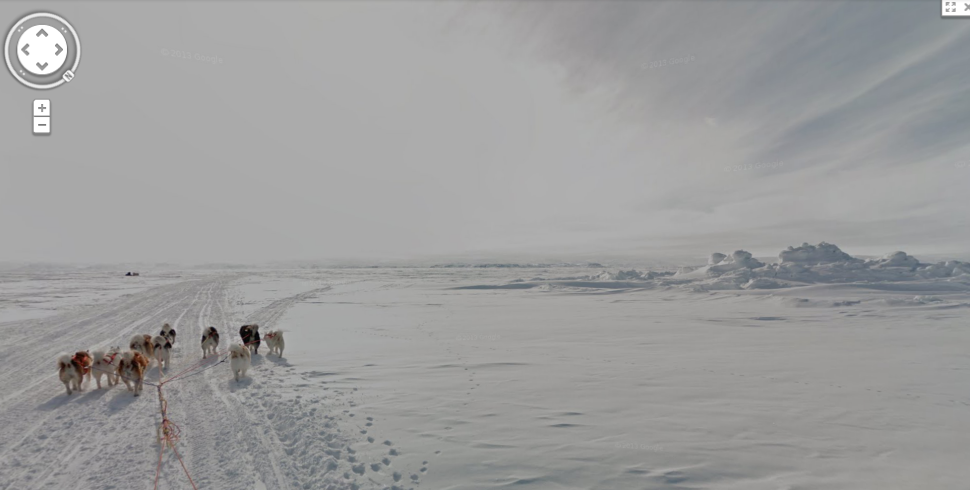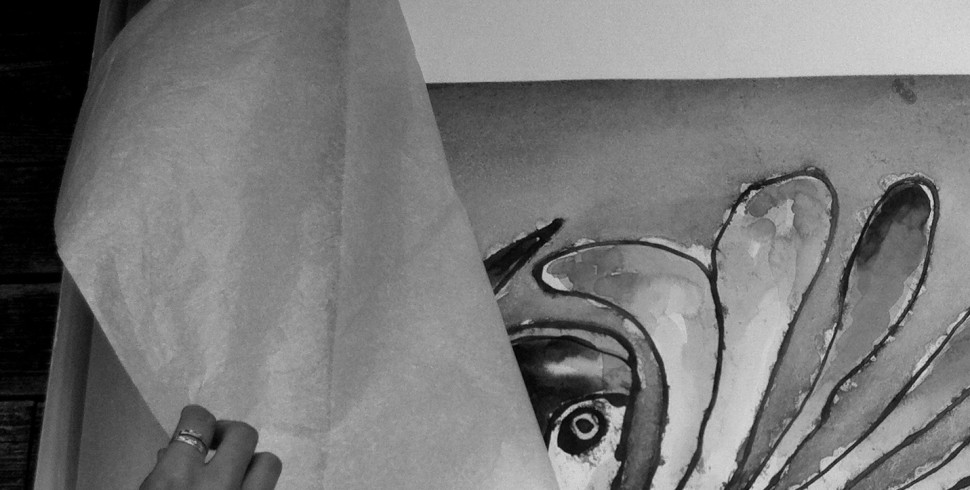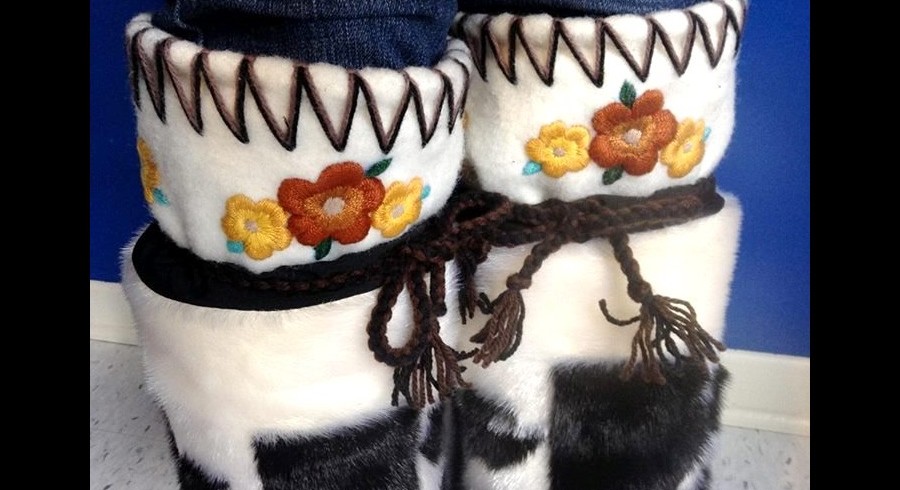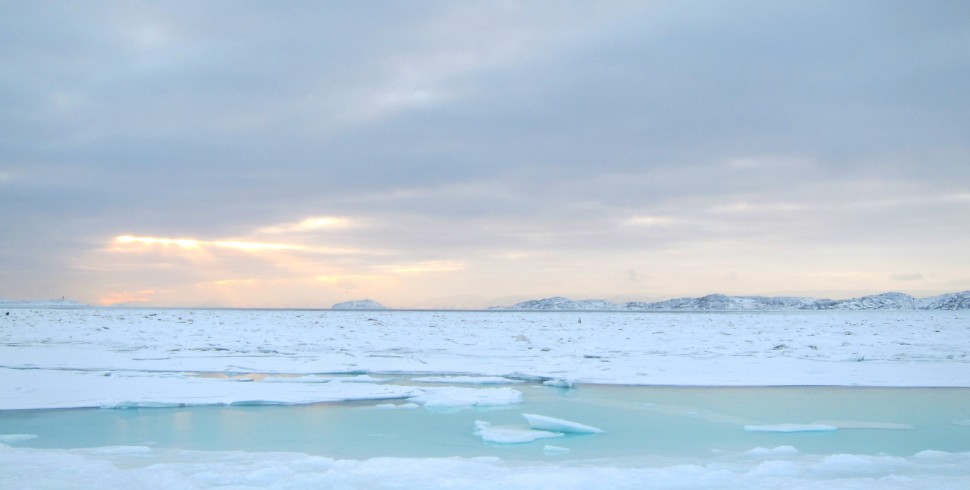When I went to Cape Dorset in July, one of my hopes was to meet with the youth that worked on the giant Piliriqatigiingniq mural in Toronto, which was finished a week before my visit. I reached out to Alexa Hatanaka and Patrick Thompson of Embassy of Imagination, a group that organizes multidisciplinary arts initiatives for youth.
Unfortunately, I wasn’t able to meet the four Cape Dorset artists who worked on Piliriqatigiingniq – Audi Qinnuayuaq, Parr Etidloie, Latch Akesuk, and Cie Taqiasuq – but my email introduction led to a string of messages between myself and Alexa, and subsequently, the sharing of some previously unseen photos (more on those shortly).
Alexa and Patrick wanted to create something bold and beautiful to “share the next generation of Inuit art” during the PanAm games in Toronto – and so they turned to some of the young artists they’d met over the years during workshops in Cape Dorset.
“Parr and Audi collaborated on a mural with us in Cape Dorset that we installed this winter,” Alexa wrote, and all of the youth were involved in painting wildlife-proof recycling bins. These four young men joined two other artists in Toronto to plot and paint, Piliriqatigiingniq, which means “working together” – a fitting name for a truly collaborative project.
As I stated earlier, the emails between myself and Alexa brought out a number of great memories and unpublished photos that give us a glimpse of some of the behind-the-scenes work (and fun!) that went into creating the mural.
Pre-Painting Prep
Before heading to Toronto, the team spent two months in Cape Dorset planning their project. In her email to me with these photos, Alexa writes, “I just came across these looking for something else…gives me goosebumps!”
I can see why Alexa is so moved by these candid photos: there is an intensity and focus in the artists’ faces as they start to realize what was at the time still an open, amorphous project.
I especially like these group shots of the boys, papers everywhere as they draw and discuss and collaborate. It’s no small task to design a 50 foot mural as a group, but the photos show a level of comfort and ease that is telling of true artistry.
.
Work In Progress

The mural was projected on the wall at night so that the artists could see and trace the outlines. Photo by Alexa Hatanaka.
These work-in-progress photos show the scale of Piliriqatigingiq, and the organization and calculations that went into creating it. Converting the sketches and drawings into a larger-than-life installation required not only creativity and paint, but use of scaffolding and a cherry-picker.
I was surprised to learn that the Embassy of Imagination team did most of the construction and heavy machinery work themselves! “Patrick operated the boom lift,” Alexa told me, “and the Toronto youth that worked with the Dorset boys on the wall helped set up scaffolding as well…no construction crews!”

The Cape Dorset artists with the rest of the team in front of a partially-finished mural. Photo by Tobin Grimshaw.
.
Touring Toronto
Audi, Cie, Latch, and Parr spent nearly three weeks in Toronto working on the mural. But you can’t paint all day. Here are some of the non-art activities they enjoyed in the big city.
As an aside, I find the above photo equally terrifying and adorable. I have spent the better part of my life avoiding contact with pigeons as they are creepy and also act like they are not birds. I have, on several occasions, seen a pigeon ride the subway and patiently wait for the automatic doors to open at whatever stop they had plotted to infiltrate. Obviously, Latch is much braver than I, and also, pretty swift, as pigeons generally walk away from human contact (note I said walk, not fly; they literally stroll away from you like they’re people on the sidewalk, too).
Art Tour

Parr, Cie, Audi, and Latch pose in front of Feheley Fine Arts Gallery with Patricia Feheley. Photo by Alexa Hatanaka.
While sorting through these photos, I was particularly moved by the images and stories around the group’s trips to the National Gallery, the Art Gallery of Ontario, and the Feheley Fine Arts Gallery. Alexa and Patrick worked with these institutions to organize some private visits for the youth to take a look at their Inuit art collections.

Andrew Hunter from the Art Gallery of Ontario poses with the youth in front of a drawing by Tim Pitsiulak. Photo by Alexa Hatanaka.
During these visits, the Dorset youth were able to view works from their community of Cape Dorset – including pieces crafted by their own family members.
“Parr saw his dad Isacci’s art at the National Gallery and Feheley Fine Arts, Latch saw his grandpa’s work (both Nuna Parr and Latcholassie Akesuk) carvings at the National Gallery,” Alexa recalls. “We also saw Meelia Kelly’s work (Audi’s grandma) and we saw the graphic artist Parr’s work who is the great grandfather of both Latch and Parr.”
In conversation with VICE, Parr stated that he had was unaware that his great-great-grandfather’s works were on display at the National Gallery of Canada in Ottawa until he saw it himself. The irony of this is summarized nicely by Alexa, who told me that “since the art in [Cape Dorset] is shipped out, no one lives with the artistic legacy of Dorset.”

Audi and Parr locating landmarks on Shuvinai Ashoona’s “Cape Dorset from Above” (2012) at the Art Gallery of Ontario. Photo by Tobin Grimshaw.
What Alexa is eluding to is the commercialization of Inuit art in the early 1900’s, when the Canadian government encouraged the start of a carving industry. In conjunction with the Canadian Guild of Crafts and the Hudson’s Bay Company, they created a pamphlet called “Eskimo Handicrafts” which offered suggestions on what Inuit artists should make in order to appeal to the commercial (read: white) market.
Flash forward 50 years, and Inuit art is selling in the millions of dollars at prim auction houses like Waddington’s in Toronto, often to international buyers. The world’s largest Inuit art collection is in Winnipeg, not in Cape Dorset, though the latter is considered the Capital of Inuit Art. By and large, Inuit art is created for, owned, and viewed by non-Inuit.
That being said, this instituted arts industry has also provided economic opportunities for many Nunavummiut, as well as the ability to preserve or document cultural practices and knowledge. And not everyone stuck to the suggestions in the pamphlet; for excellent summaries of the history of Inuit art, check out “Inuit Artistic Expression as Cultural Resilience” by Heather Igloliorte, an Inuk artist and PhD candidate at Carleton, and “Squeezing Money from Stone” by Jasmine Budak, which features interviews with artists, curators, and buyers about the changing status of Inuit art.
This latter goal of cultural preservation, rather than acculturation, is precisely what makes the Piliriqatigiingniq art visits so touching. This tour wasn’t about money. It wasn’t about appealing to the dominant culture. It was about personal histories and cultural links; it was about family.
.
After the Art
Piliriqatigiingniq has received a warm response from Torontonians and on social media – but what about back home?
Well, according to Alexa, “The response has been really positive in Cape Dorset…the boys did their community proud.” Beyond Nunavut, Alexa and Patrick recently travelled to Inukjuak and were pleasantly surprised to see that the locals there knew about the mural, too – much thanks to the Northern media.
“It was also a positive affirmation for CBC North to cover the story and interview Parr in Inuktitut for television,” Alexa said, “As well as the northern newspapers.”
In terms of the lasting impact of Piliriqatigiingniq, the Dorset youth’s chaperone, Joseph Pinguartuq, is working on an Inuktitut-language mini-doc about the project. Based on interviews with the artists and their parents, the goal of the film is to get an understanding of how the boys think the project affected their peers and their community. Though Alexa already has high hopes for the Audi, Cie, Parr, and Latch.
“Art is powerful,” said Alexa, “We can hardly wait to go back to Cape Dorset and see what these guys create next!”
I can’t thank Alexa enough for how much time and energy she put into our correspondence, despite internet limitations and travel strains on both our ends! You can learn more about Alexa and Patrick’s work at PA System or on Instagram.
And a special shoutout from Embassy of Imagination and Piliriqatigiingniq: We would like to thank our partners Mural Routes and Nunavut Arts and Crafts Association. We would like to acknowledge the funding support of Canada Council for the Arts, Government of Canada Department of Canadian Heritage, and StreetARToronto. We would also like to thank the amazing Kinngait Studios and the West Baffin Eskimo Co-op!

